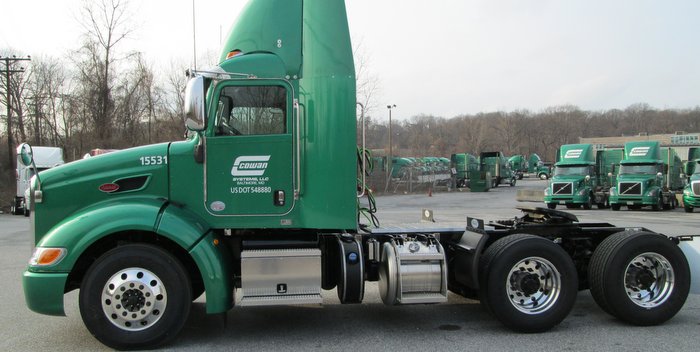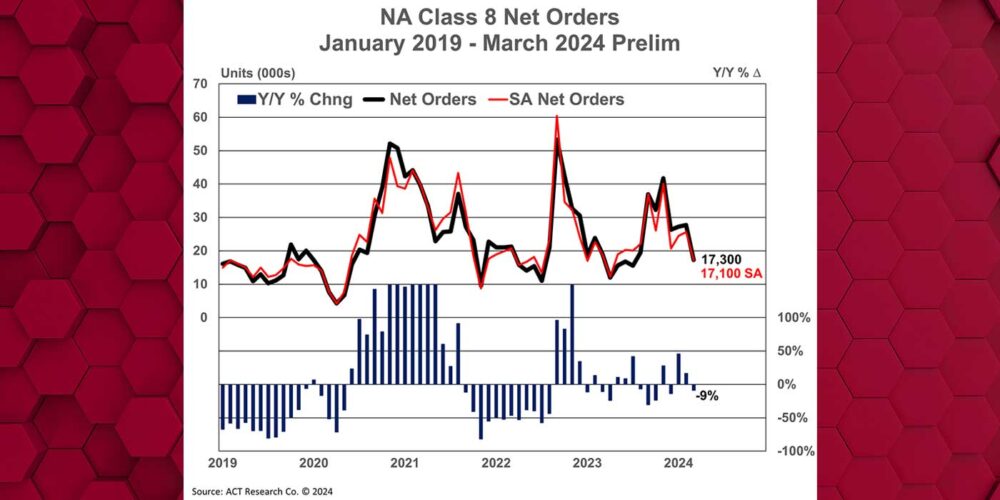Choosing an engine, transmission and axles that are specifically matched to work together for optimum performance is a fast emerging trend. When I say “optimum performance,” I mean maximum fuel efficiency with the right horsepower engines, coupled with an automated manual transmission that shifts at exactly the right RPM, and an axle with the best ratio to haul loads without straining.
OEM systems
All the major original equipment makers (OEMs) are now offering matched components designed and built to ensure maximum fuel efficiency, provide and lower maintenance costs.
Daimler Trucks of North America offers an integrated Detroit Powertrains (for Freightliner and Western Star trucks) that include the Detroit DD15 engine with a new downspeed rating, a Detroit DT12 automated manual direct drive transmission with Intelligent Powertrain Management, and Detroit front and rear axles. Mack Trucks offers the integrated Mack powertrain and suspensions. The truck maker states that all its powertrain components are designed to work together for optimum performance. Navistar International ProStar trucks are offered with proprietary engines and Cummins engines, which are integrated with automated manual transmissions (AMTs) from Eaton. PACCAR’s Peterbilt and Kenworth trucks may be spec’d with PACCAR MX-13 engines that can be integrated with the Apex integrated powertrains and the Eaton Ultra Shift Plus AMT. Volvo Trucks North America offers the Volvo engine, transmission and rear axle ratio.
Fleet experiences
According to Ryder’s Vice President of Supply Management and Global Fuel Products, Scott Perry, “Ryder’s fleet is diverse and covers a broad range of duty-cycles across the U.S. and Canada. We have several thousand vehicles that are leveraging integrated powertrains including the DD15/DT12, the Volvo proprietary engine platform and the I-Shift transmission, and the Cummins ISX and Eaton Ultrashift Advantage products.”
As for meeting anticipated fuel improvements with these vehicles, Perry says, “our expectation was to achieve 3% to 7% fuel economy improvement, and we have achieved that in all instances. The duty-cycles are quite varied, but being able to optimize the proper engine/transmission/axle ratio combinations allows us to tailor the configuration to deliver optimal performance based upon the application.
“It is important to understand the intended application when tailoring those specifications. In making sure that the fleets understand that once those specs are optimized for a primary duty cycle, those benefits can be eroded, and performance and reliability can be negatively impacted if the vehicle is pushed into a different duty cycle,” he continues. “This is a case where you really can’t put a square peg into a round hole without really having negative consequences.”
As for fuel economy with these trucks, Perry says that it varies by customer application, but explains that they “can definitively say that the performance has improved in every application where the specification is being properly applied. Specifically, the benefits are greater fuel efficiency, and in the case of the automated transmission specifically, improved total average fuel economy.”
Michael Sizemore, director of maintenance for Cowan Systems, talks about his experiences with integrated powertrains: “Within our several national divisions, we run a variety of routes that include cross county on-highway, regional and city delivery applications, with drivers that fit into each of those operations. We have a mixed fleet that includes 1,400 pieces of equipment. We run Peterbilt 384 and 579 with PACCAR MX-13 engines with the Apex integrated powertrains, with Eaton Ultra Shift Plus automated manual transmissions and Navistar ProStar 13-liter MaxForce engines and the International powertrain with the same AMTs.
“The last 48 months we have spec’d axle rations of 3.08 that seem to be the best matched power and torque for hauling and fuel economy. With these vehicles we are seeing a .5 MPG increase in fuel economy. This is significant given the number of trucks in the fleet and the miles covered.” Sizemore adds that he thinks the ATMs are an integral part of the fuel savings equation because they provide shifting at the correct RPMs at a consistency level most drivers can’t execute.














